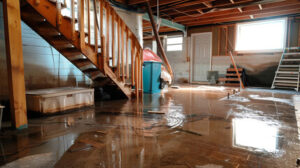Mice invade homes and businesses looking for food, shelter, and warmth. They can chew through wires, destroy fabric, contaminate food, and spread disease with their urine and feces.
Rodent-proofing your home can help prevent mouse infestations. You can seal cracks with caulking or use metal pads that are difficult to chew through. Contact Mice Removal Texas now!

If you notice mouse droppings scattered around the house, gnawed areas on the edges of walls and cabinets, or scratching noises in your walls or ceilings at night, you probably have a mice infestation. These rodents can carry diseases and cause significant property damage, so it’s important to identify the problem early and act quickly.
The first sign of a mice infestation is often the sight of mouse droppings, which look like tiny rod-shaped pellets about the size of grains of rice. They’re most commonly found in food storage areas, pantry shelves and cabinet bottoms, closets and drawers, and along baseboards. You may also find them under sinks and in crawl spaces and attics. As the infestation grows, you’ll likely see more scurrying and hear muffled squeaking sounds at night.
Mice gnaw on hard surfaces to control the growth of their teeth, and they chew through pipes, wires and drywall as well. When a mouse infestation is severe, you’ll frequently find gnaw marks on the edges of floorboards and walls, and along the insides of cabinets. You’ll also see rub marks where mice brush against walls and cabinet sides on their regular routes. Urine pillars (a buildup of body grease, dirt and urine) are another common indicator of a large or heavy infestation.
Gaps in door and window seals, damaged weather stripping, and gaps under sink cabinets are commonly used entry points into homes by mice. They can squeeze through gaps as small as a fourth of an inch.
In addition, look for holes and gnawed spots under doors, inside cupboards, and behind appliances. Check the bases of compost bins and any vents located close to your home, too, since these provide shelter for mice. Overgrown shrubs and vines can serve as a bridge for mice to enter your home through the roof or eaves.
You’ll also need to look carefully at any stored items in your home, such as holiday decorations, boxes of clothes, and old ski equipment, to ensure that mice haven’t nested in them. Regular inspections can help prevent the problem from becoming out of control.
Mice Droppings
Mouse droppings are one of the most common warning signs of a mouse infestation. They look dark and granular, similar to grains of rice in size, and can be found near food sources, in well-traveled mouse corridors, along baseboards and around other areas of the house that mice frequent.
Mice droppings are usually black in color, but can vary depending on the type of food mice consume in your home. Older rodent droppings are usually hard and dry, while newer ones will still be moist. As droppings become older, they can clump together into small mounds that are often found in corners of rooms and along baseboards.
It can be difficult to distinguish between rat, bat and squirrel droppings, but if you notice a large number of cylinder-shaped rodent pellets in your home, this is a sure sign that mice are present. You should also be on the watch for gnaw marks, which are typically 1/32-inch wide and clean-cut. These marks are common on cardboard boxes, in invaded drawers and near chewed electrical wiring.
If you suspect a mouse infestation, air out the area where droppings are located for 30 minutes before attempting to clean them up. This helps reduce the risk of respiratory problems. Wear rubber, latex or vinyl gloves and a mask when cleaning up mice droppings.
Besides droppings, other warning signs of a mice infestation are grease marks caused by their bodies rubbing against walls and cupboards as they travel through your home on regular routes, greasy smears in corners where urine accumulates, dark stains on carpets from body oil or food stains and scratches and gnaw marks on furniture and baseboards. You may also hear scratching noises at night when mice are most active.
Using natural repellents such as peppermint oils, clove oil and cayenne pepper can help prevent mice from entering your home. Place cotton balls soaked with these repellents in places where mice frequently travel like cabinets, drawers and food storage units. You can also put scented candles, dryer sheet stuffing or a deodorant spray with a strong scent in nooks and crannies where mice are most likely to hide.
Mice Nests
Mice are small rodents that can easily gain access to your home due to its proximity to food, water, and shelter. Once inside, mice can cause a great deal of damage, creating harmful allergens and germs, chewing wires, and destroying your property. These rodents also carry parasites like fleas and ticks that can cause diseases in humans. In addition, their droppings can spread bacteria that lead to illness. Therefore, it is important to know how to spot a mouse nest so that you can seek professional help.
Mice use a variety of materials to build their nests, including paper and insulation. They may rip up old newspapers, letters, or discarded wrappers. They can also chew on soft items such as furniture cushions, mattresses, and pillows. They often gather tufts of fur, feathers, and clothing to pad their nests. Mice nests are usually built in confined areas, such as behind walls, in cabinets, or under large appliances.
Mouse tracks and runways are another clear sign of a problem. These tracks will be left around dark places where the mice have walked. You can check for these tracks by sprinkling flour, talcum powder, or china clay and then checking the following day for fresh marks. Mice urine stains are also a clear indicator of their presence in your home. Urine marks are typically lighter in color than the feces they leave behind and have a distinctive smell.
If you find a mouse nest, do not disturb it. Disturbing a nest can release allergens, viruses, and fleas into the air and contaminate your home with bacteria. If you must dispose of a nest, do so carefully and quickly.
Mice are clever and resourceful animals, finding ways to survive and thrive even when they’re living in close proximity to their human neighbors. They’ll create nests to stay warm, hide from predators, and nurture their offspring. The damage they do in the process can have serious health and safety consequences, from chewed wires to destroyed insulation. It is therefore crucial to keep your house clean and organized and to seal cracks or holes to prevent mice from entering.
Mice Damage
Mice invade homes and buildings in search of food, shelter, and warmth. Their gnawing can ruin stored items, and their urine and droppings contaminate foodstuffs. They also spread diseases.
Signs of mice include gnaw marks, droppings, tracks and trails in dusty areas. Listen for noises in walls and ceilings, especially at night when mice are most active.
Mouse droppings are small and oblong, dark in color and can be found under sinks, in cupboards and along skirting boards. Mouse tunnels are often lined with shredded paper, string, pet hair and other soft material. Listen for squeaking and gnawing sounds.
Despite their small size, mice are able to squeeze through cracks and holes in walls, pipes and foundations. If you find that your home has a lot of these spaces, seal them with silicone caulk. Stainless steel wool or foam insulation can be used to plug larger gaps. Check for entry points around doors and windows, and pay special attention to basement foundations and basement walls.
If you suspect a mouse infestation, call Viking Pest Control immediately. Our trained professionals will assess your property and determine the best course of action for pest control. Our technicians are licensed and insured to protect your family, pets and property from unwanted pests.
We offer a variety of safe and effective methods for mice removal, including traps, baits, poison and extermination. In severe cases, we can use fumigation. We do not recommend this for residential properties and only offer it when other treatments are unsuccessful. Fumigation involves putting large amounts of chemicals in your home, and it must be performed by a professional.
Preventing mice is a lot easier than dealing with an infestation. Clean frequently to remove hiding places for rodents, and keep your house free of food debris and crumbs. Dispose of trash promptly, store food in sealed containers, and store bird seed and other materials outdoors. Regularly mowing lawns, removing brush piles and trimming bushes can also deter rodents. Regularly checking basements and attics for signs of mice can also help prevent an infestation from developing.








